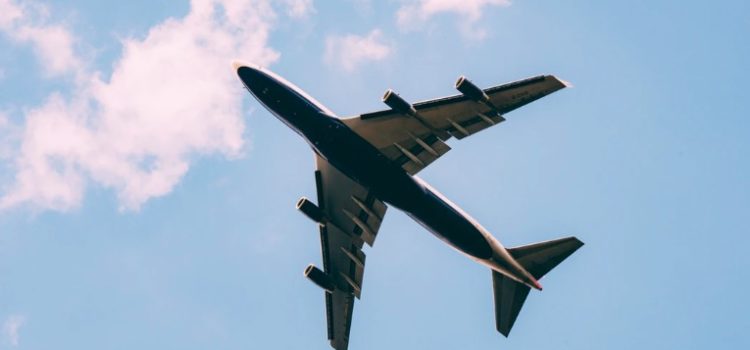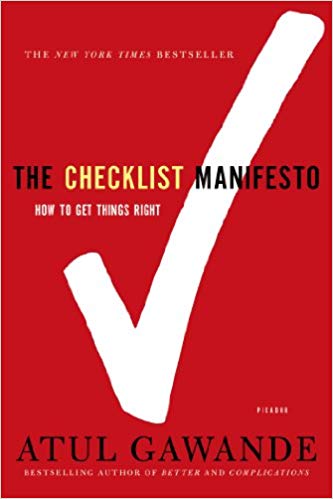

This article is an excerpt from the Shortform summary of "The Checklist Manifesto" by Atul Gawande. Shortform has the world's best summaries of books you should be reading.
Like this article? Sign up for a free trial here .
Aviation safety has improved dramatically in the last few decades. What elements can we credit for the increased safety of planes?
While knowledge and advanced technology have certainly played their part, we might have a simple checklist to thank for improved airplane safety. Learn why.
Checklists and Aviation Safety: Boeing Discovers Checklists
In 1935, the Army Air Corps asked airplane manufacturers for a new long-range bomber. Boeing’s Model 299, which exceeded specifications, was favored over models by Martin and Douglas. However, during a flight competition held by the Army in Dayton, Ohio, the Boeing model stalled at 300 feet and crashed, killing two of five crew members.
The plane was much more complicated than previous aircraft — the pilot had more steps to follow and forgot to release a new locking mechanism on the elevator and rudder controls. After the accident, a newspaper called the new model “too much airplane for one man to fly.” The Army Air Corps chose Douglas’s smaller design, and Boeing took a big financial hit.
Nonetheless, the Army bought a few Model 299s as test planes and a group of test pilots studied how to prevent future pilot errors. Instead of focusing on requiring longer training, they came up with a pilot’s checklist. Flying up to that point had not been especially complicated, but flying the new plane required too many details to be left to memory. For improved aviation safety, the simple procedures needed as much attention as advanced technology.
The test pilots made their checklist simple, clear, and concise — it fit on an index card — with step-by-step checks for takeoff, landing, and taxiing. Using the checklist, pilots went on to fly the bomber, which became the B-17 Flying Fortress, 1.8 million miles without incident. Checklists were the beginning of improved aviation safety. The Army ordered 13,000, and the bomber gave the allies a big air advantage in World War II.
Checklists have become essential in aviation safety, averting problems and accidents. In notebook and electronic forms, they’re a standard and crucial part of pilot training and aircraft operation.
Why Pilots Trust Checklists
Some of the most effective checklists come from the world of aviation. Pilots readily turn to checklists because they’re trained to do so, from the beginning of flight school. They know their memory and judgment are fallible, and that lives depend on their recognizing that fact.
They also know that checklists have proven their worth and don’t hesitate to turn to them in emergencies. For example, pilots turned to a checklist and saved lives in 1989 when a forward cargo door blew out on a flight from Honolulu to New Zealand, and flying debris damaged a wing and two engines. In under two seconds, nine passengers were sucked from the plane and lost at sea.
The pilots didn’t know what had happened — they thought a bomb had gone off — but they knew cabin pressure and oxygen had dropped. Voice recordings show that they immediately turned to a checklist. Following protocol, they reduced altitude, shut down the two damaged engines, tested the plane’s ability to land with wing damage, dumped fuel to lighten their load, and safely returned to Honolulu with 328 remaining passengers and 18 crew members. This is a success in the use of checklists for airplane safety.
As another example of the use of checklists in aviation safety, in 2008, the engines gave out on a British Airways flight from China when it was only two miles from London Heathrow Airport. The pilots crash-landed the Boeing 777 at 124 miles per hour in a grassy field a quarter-mile short of the runway, but everyone survived.
The cause wasn’t provable, but investigators theorized that ice crystals had formed in the fuel lines as the plane flew over extremely cold regions. Boorman’s Boeing team created a checklist of new procedures for dealing with a fuel blockage caused by ice crystals, and within a month it was in the hands of pilots and in cockpit computers.
Later that same year, it was put into action, when a Delta flight from Shanghai to Atlanta had engine failure over Great Falls, Montana, due to ice in the fuel lines. Pilots followed their checklist, slowing instead of revving the engine to give it time to recover, and 247 people were saved.
Redefining Heroism
Tom Wolf’s book, The Right Stuff, chronicles the passing of the maverick test pilot culture.
Being a test pilot was extremely dangerous when the job began — pilots needed courage and an ability to improvise: the right stuff. But as knowledge and complexity of flying grew, and pilots began using checklists and flight simulators, the emphasis shifted from grandstanding to safety, effectiveness, and teamwork in high-risk, complicated situations. Complexity means more attention needs to be given to aviation safety.
On Jan. 25, 2009, US Airways Flight 1549 left La Guardia Airport with 155 on board, hit a flock of geese, lost both engines, and crash-landed in the icy Hudson River. Investigators later called it the most successful ditching in aviation history. Pilot Chesley B. “Sully” Sullenberger III was hailed as a hero.
But Sullenberger repeatedly emphasized that it was a crew effort. Many factors contributed to the “miracle on the Hudson”: procedures and checklists, the fly-by-wire computer system that controlled the airplane’s glide to the water, the copilot, and the cabin crew who handled the evacuation. Success was as much a result of teamwork and adherence to procedure as it was of skill and coolness under pressure.
Here’s how events unfolded. Sullenberger and First Officer Jeffrey Skiles, equally experienced pilots, were flying together for the first time. To begin with, they ran through their checklists and introduced themselves to each other and the cabin crew. They held a briefing, discussing the flight plan, potential concerns, and how they’d handle problems. They created a team, ready for the unexpected, which occurred ninety seconds after takeoff when the plane collided with a flock of geese. Two engines were each hit by at least three geese and immediately lost power.
Sullenberger made two key aviation-safety decisions almost instinctively: to take over flying the airplane and to
land in the Hudson River. He knew the plane had too little speed to make it back to La Guardia or to Teterboro Airport in New Jersey. He had more hours than Skiles in flying the A320, and the key landmarks to avoid hitting were visible from his left-side window.
Skiles had just completed A320 training and was more recently familiar with the checklists. While Sullenberger looked for a place to land, Skiles went through the engine failure checklists to try and restart the engines, while also preparing for ditching. First, he focused on restarting, since that offered the best chance of survival. He completed the restart sequence without success on both engines, a remarkable feat in the short time they had. Next, he began ditching procedures: he sent distress signals, notified the crew, and configured the plane for an emergency water landing.
Sullenberger focused on the descent to the water. The fly-by-wire control system kept the plane from drifting and wobbling, and it maintained an optimal angle for descent. It enabled the pilot to focus on other critical things, including finding a landing site near ferries and keeping the wings level as the plane struck the water.
The three flight attendants also followed protocols: they instructed passengers to put their heads down and brace for impact. After landing, they instructed everyone to put on life vests, got the doors open, and made sure passengers didn’t waste time gathering belongings. They got everyone out in three minutes, with only two of the three exits useable. Sullenberger checked the condition of the plane and passengers, while Skiles ran the evacuation checklist, for instance making sure fire hazards were dealt with. Ferries and boats arrived to pick up passengers, while air in the fuel tanks kept the plane afloat. Sullenberger walked the aisle to make sure no one had been forgotten, and only then finally left the plane.
Who was the hero in this story of aviation safety? The 155 people on board were saved by something much bigger than individual heroism and skill. It was the crew’s ability to follow vital procedures in a crisis, stay calm, and recognize where to improvise and not improvise. They operated as a team under complex and dire circumstances, having prepared to do so before the crisis.
Aviation safety is changing the definition of heroism in the modern era.
Adding Discipline as a Value
All professional occupations have a code of conduct with three expectations in common:
- Selflessness: You place the needs of others who depend on you above your own.
- Skill: You strive for excellence in knowledge and expertise.
- Trustworthiness: You act responsibly toward others.
Unlike most professions, aviation has a fourth expectation: discipline, in following procedures and working with others. In medicine, the fourth element is autonomy, which runs counter to discipline. However, in large enterprises involving complex, high-risk technologies, where the knowledge needed exceeds the capacity of any individual, what’s needed is discipline.
The aviation industry has made discipline a norm. They study failures and incorporate checklists, which they regularly revisit and refine. They employ procedures and teamwork to make the systems we depend on work.
———End of Preview———

Like what you just read? Read the rest of the world's best summary of "The Checklist Manifesto" at Shortform . Learn the book's critical concepts in 20 minutes or less .
Here's what you'll find in our full The Checklist Manifesto summary :
- How checklists save millions of lives in healthcare and flights
- The two types of checklists that matter
- How to create your own revolutionary checklist






